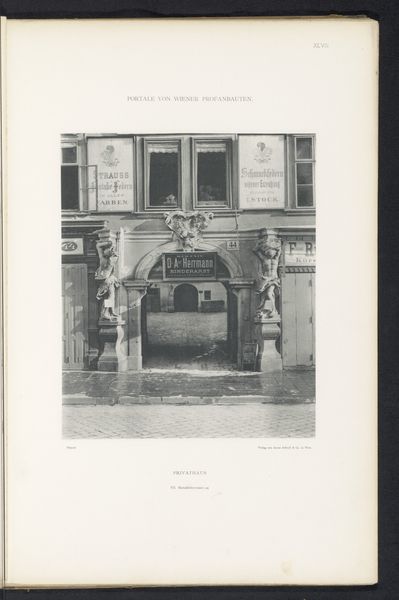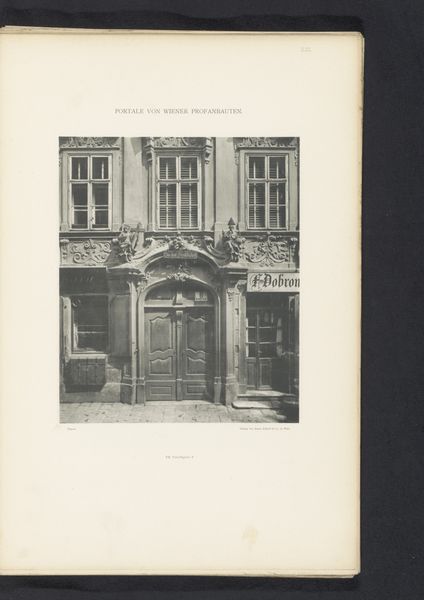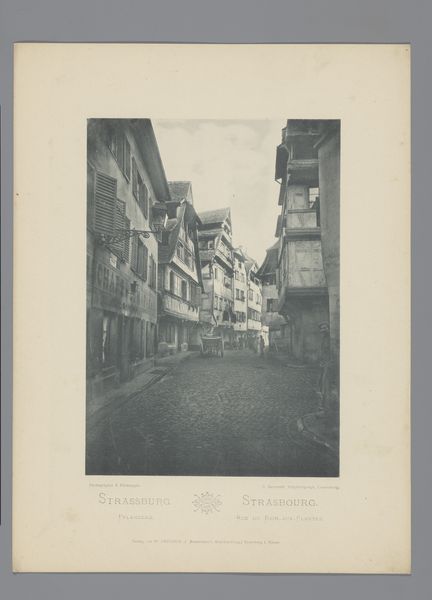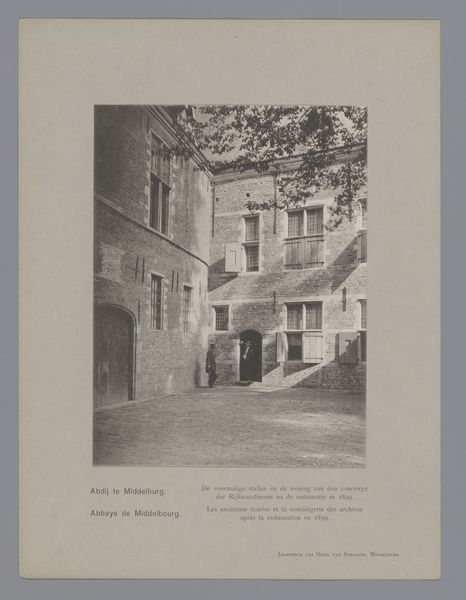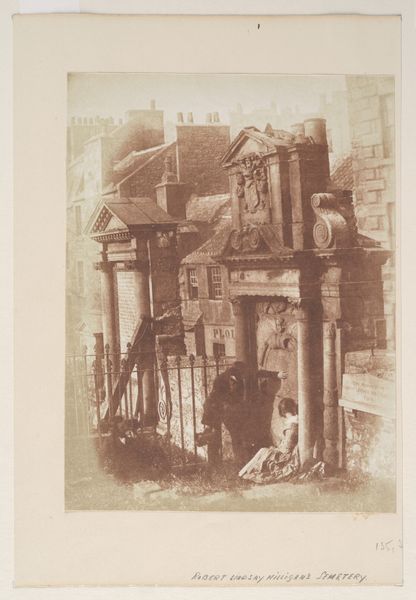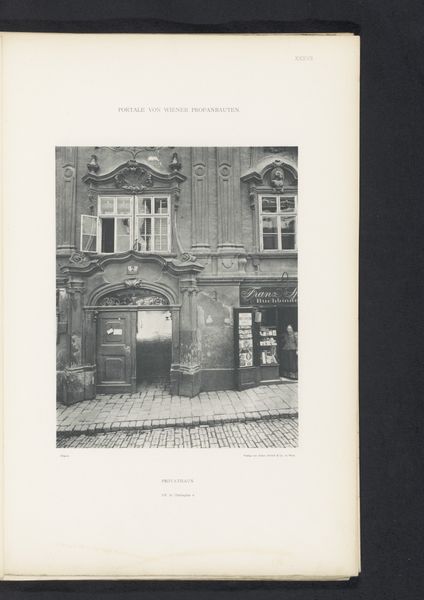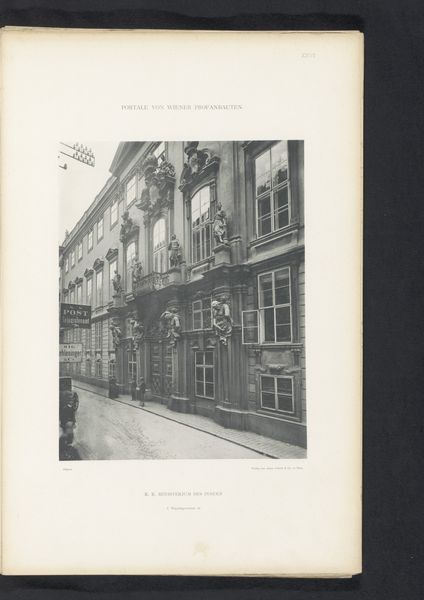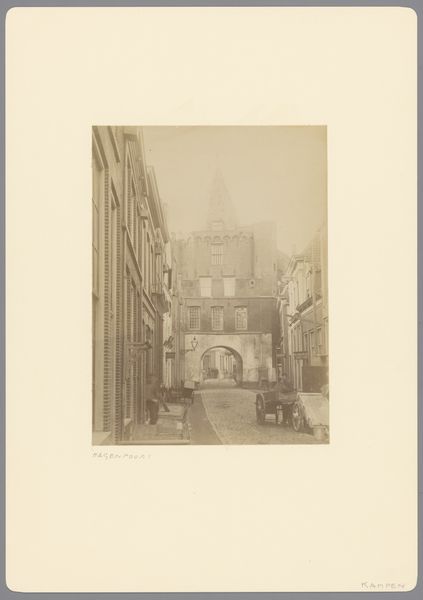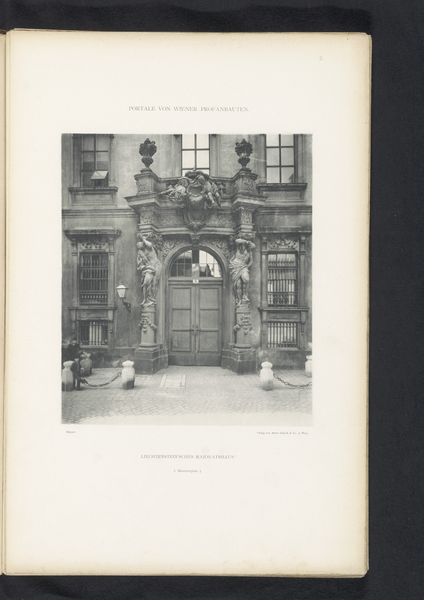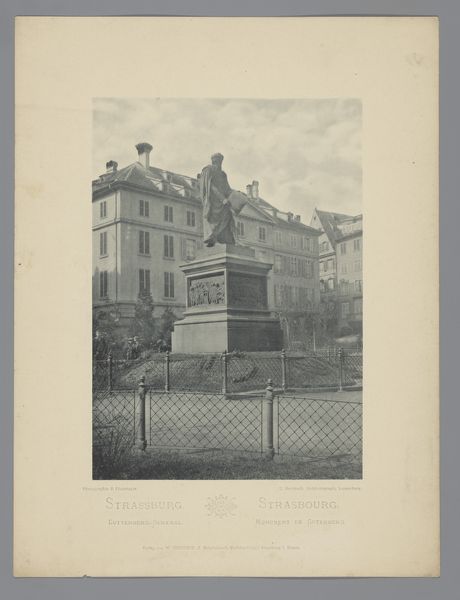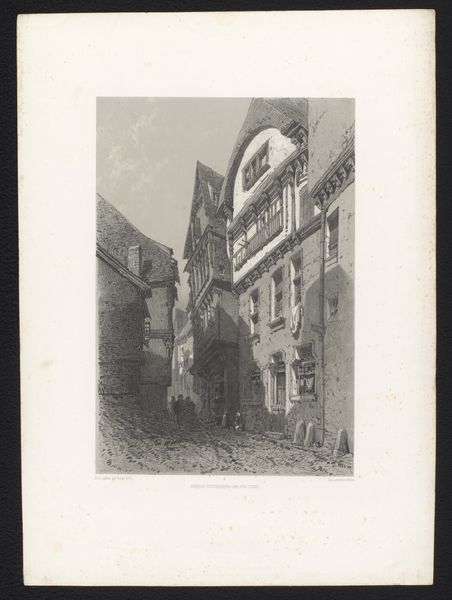
print, photography, albumen-print
# print
#
photography
#
cityscape
#
street
#
albumen-print
Dimensions: height 215 mm, width 153 mm
Copyright: Rijks Museum: Open Domain
Curator: Charles Bernhoeft captured this “Decoratieve put te Obernai,” or "Decorative Well in Obernai," before 1894, using the albumen print process. It's quite striking, wouldn't you agree? Editor: My first thought is stillness. There's an incredible, almost ghostly quiet in this town square, amplified by the stark contrast and precise lines of the well itself. Curator: The albumen print truly lends a timeless quality. Considering Obernai’s location in Alsace, a region contested between France and Germany, this well becomes more than just a picturesque fountain. Editor: Absolutely. The photograph situates the well within a complex intersection of national and regional identities. Look at how Bernhoeft emphasizes the intricate stonework; it is asserting a specific cultural heritage. But whose heritage is it asserting? And who is included, or excluded, in this idealized depiction? Curator: Good point. You know, it’s interesting to consider the well as a central gathering place in the community. These spaces facilitated the distribution of vital resources but were also sites for news sharing and social interaction, right? This intersection between communal function and aesthetic embellishment really fascinates me. I almost feel I can smell the damp cobblestones, imagine children playing around it! Editor: Precisely. And beyond a functional space, the decorative elements may also symbolize a specific worldview that upholds power relations within the community. Who decides how the space looks, and who gets to use it freely? That is also relevant. What stories does the design reflect? Curator: A visual power play, perhaps. So, is the lack of people intentional, lending the photo this "ghostly" aura that we started with? Was the town square actually this empty, or was the photographer commenting on the decline of something else entirely? Maybe Obernai had simply not yet caught up with modernization… Editor: Or, conversely, perhaps it speaks to the persistence of local traditions amidst encroaching modernization. We cannot underestimate that photography, as a technology, arrived at a critical point of historical transition. This piece presents an important reminder that the past and the present are constantly in dialogue, especially in locations charged with a multiplicity of meanings, like Alsace. Curator: It’s an artwork that beckons you to reach out across time, to hear echoes of laughter, and water, in a place both real and slightly imagined. Editor: A well of contested memory, forever caught in the chiaroscuro of history.
Comments
No comments
Be the first to comment and join the conversation on the ultimate creative platform.
